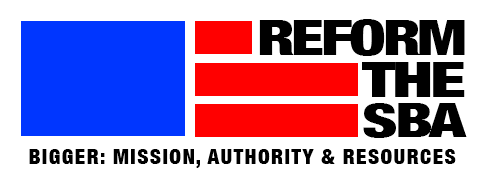There’s a reason the Fed’s Main Street Lending Program came up well short.
Wall Street Journal
March 14, 2021
Andy Kessler
Selling the Covid relief package on Jan. 22, Vice President Kamala Harris tweeted, “@POTUS and I are taking immediate action to help small businesses—because they power our economy, and they need relief.” It got 120,000 likes! Then? Not much. The $1.9 trillion “rescue plan” porkfest has some one-off grants but is quiet on getting small-business loans going again. The U.S. has (or had) 30 million small businesses, employing almost half the workforce. Of the 10 million currently unemployed, maybe five million to seven million worked for small businesses. They need help.
The Main Street Lending Program in last year’s Cares Act set aside $75 billion in loss provisions so the Federal Reserve could facilitate $600 billion in loans to small businesses. Here’s the report card: As of October, MSLP had made fewer than 400 loans, totaling $3.7 billion. That’s it! A dud. That month MSLP reduced its loan size from $250,000 to $100,000 but still found few takers. It shut down in early January. That’s your government inaction.
The average small business (fewer than 500 employees) borrows just under $40,000, according to Fundera. Sixty-one percent take out the loans to fund day-to-day operations. Bars, hotels, small manufacturers, retail—maybe they own the pizza oven and now need some dough.
So why only 400 loans? Those $40,000 loans, well below the MSLP thresholds, usually last 18 months and 12% never get paid back. Add origination and servicing costs, and banks need to charge interest rates in the high teens or even 20% to make money—Tony Soprano rates. Not good optics.
Plus, banks like to lend to companies that don’t need it. Prime customers have FICO scores of 720 and above. Too many small businesses score between 580 and 720. And banks are required to take upfront losses on these loans because of a standard known as CECL: current expected credit losses. So banks didn’t bother. No wonder MSLP was a bust.
Technology can help, especially with the tedious credit analysis needed to process loan applications. Years ago I met S.P. “Wije” Wijegoonaratna, who runs a company called Aliya. Since 2016 Aliya has worked with big banks to automate credit analysis and apply artificial intelligence to loan applications. He tells me that the AI considers 121 attributes and the company can replicate FICO scores with only four attributes, so its scores are way more accurate. Aliya’s default rate for prime customers was under 3% last year. It works.
Once Aliya’s algorithm determines creditworthiness, a smart contract is needed to house the loan information. Loans can then be packaged with other loans and securitized to attract larger sources of capital. Enter Mike Cagney, a co-founder of SoFi, who has a new company called Figure. In its Provenance system, loans are described in a smart contract, encrypted and then made traceable using blockchain—crypto technology finally being used right—so investors can use AI and other tools to drill down and buy only the loans they want. Mr. Cagney tells me that Provenance is a registry, an exchange and a ledger so that repayment information can be updated in real time. In the mortgage-backed crisis of the 2000s, no one knew who owned what loans, so debt restructuring was scarce. Instead, users simply defaulted.
How do we get small-business loans started again? Wije describes four main problems: production, risk assessment and management, servicing, and funding costs. Aliya’s AI, along with its competitors’, lowers origination costs and does risk assessment. Mr. Cagney believes that Figure’s blockchain technology alone can lower servicing costs by 117 basis points.
But that leaves funding costs. Fortunately, Wall Street is chock full of investors that buy securitized loans, as long as they understand the risk via a transparent rating system. But chicken-and-egg-like, they need to see a track record.
Wije thinks the Biden administration can help facilitate loans for as many eligible risk-screened borrowers as possible—and not at a 20% interest rate, but at 10% or lower. How? A public-private partnership (I know, yuck, but only for three years until a track record exists) constructs a vehicle that can strip out the credit risk from the interest-rate risk. It would be like traditional securitized markets, with mezzanine levels of various risk profiles. This way, the Federal Reserve, which can buy only interest-rate risk, can buy securitized small-business loans. Since the average loan is for 18 months, we’ll know quickly if this thing works. Wije suggests that expected returns will prove high enough that deep pools of capital will gladly step in to replace the Fed after three years.
Is that enough? It’s worth a try, and it’s more important than forgiving student loans. Small businesses, especially in underserved communities, were wrecked by the pandemic. Rather than grants, let’s use technology to create a long-lasting funding system and keep the dough flowing.
Small-Business Loans are MIA | Wall Street Journal | Andy Kessler
